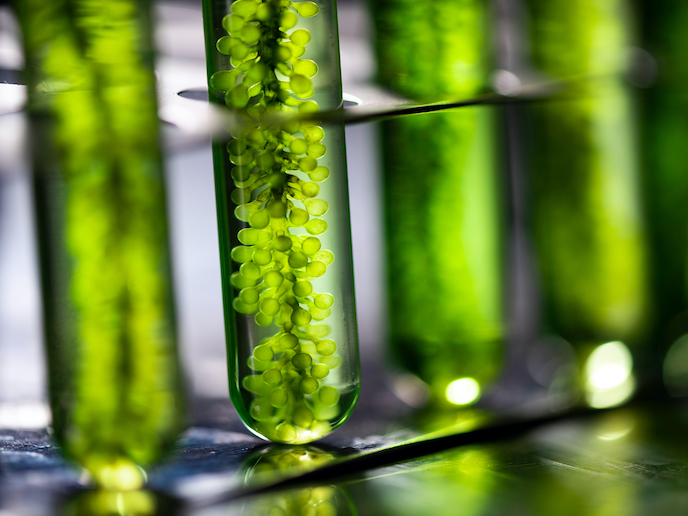Algae shows promise for sustainable biocatalytic fuel production
While biofuel shows promise as a future fuel, current technologies mainly use food crops. This results in intensive agriculture practices which reduce biodiversity. Also, the quantity of crops required for the production of 120 litres of bioethanol could otherwise feed one person for a year. The EU-supported Photofuel project(opens in new window) developed an alternative: biocatalysts(opens in new window) based on genetically engineered algae. The team cultivated the algae in saltwater in closed photobioreactors where CO2, sunlight and water were converted into fuel molecules. These molecules were excreted from the algae cells and then skimmed off from the water surface to be made available to power vehicles. “Our production method is highly sustainable. It can be situated on degraded land and by using saltwater does not compete with food farming for land or water irrigation,” explains project coordinator Hilke Heinke from Volkswagen(opens in new window), the project host. Another significant milestone was with bioderivatisation(opens in new window), where the addition of a single gene converted the relatively toxic compound, octanol, into octyl acetate – less toxic and easier to separate in the photobioreactor.
Algae’s credentials
Algae are already highly photosynthetically efficient, but to increase fuel production, the Photofuel partners – Uppsala University(opens in new window), Finland, Bielefeld University(opens in new window), Germany and Imperial College(opens in new window) London, – removed biological pathways not needed to produce fuel. The fuel molecule itself is composed of carbon, hydrogen and oxygen, from CO2 and water. This process avoids the need for cell harvesting. The more conventional process first multiplies cells, then starves them of nitrogen to stop them multiplying so that the stored metabolic energy, fat or starch can be harvested, dried and extracted to get the lipids for biodiesel production. In the biocatalytic approach, cells produce the fuel and excrete it directly into the medium for removal. “This arrangement substantially reduces the amount of fertiliser needed and only generates limited unwanted by-products, such as dead biocatalyst cells,” notes Simon Kühner, the project manager. Another advantage is that the fuel can be blended with other fuels in regional fuel distribution centres without needing to be upgraded in refineries, saving on transportation. “This means that biocatalytic production can keep high-value jobs in the local area, avoiding the rural exodus that often occurs when farmland is degraded,” adds Kühner. Photofuel’s biocatalytic process succeeded in boosting butanol production beyond 600 mg/l per day in a 2.7 l photobioreactor, over the course of a few weeks. While major challenges remain to scaling up productivity, these accomplishments could equate to 90 t/ha fuel being produced per year.
Beyond fuel
Owing to these scaling challenges, the Photofuel team is advancing their technology incrementally and so won’t target the fuel sector initially. Rather they will market small volumes for high-value products like pharmaceuticals, fragrances and cosmetics. Later they intend to approach players in the chemical industry. “As Photofuel covered the whole value chain, incorporating representatives from bioengineering, fuel science and the refinery and automotive industries, this has led to lots of different avenues for partners to explore,” says Kühner. Imperial College London has already set up a spin-off(opens in new window) to explore production of Photofuel’s high-value compounds. Uppsala University is focused on further developing the use of butanol production for CO2 capture. A4F has won contracts for the cultivation of genetically modified algae. Bielefeld University is now exploring biotechnology possibilities for the production of pharmacologically active terpenes, which could significantly reduce the cost of medication, including anticancer drugs.







